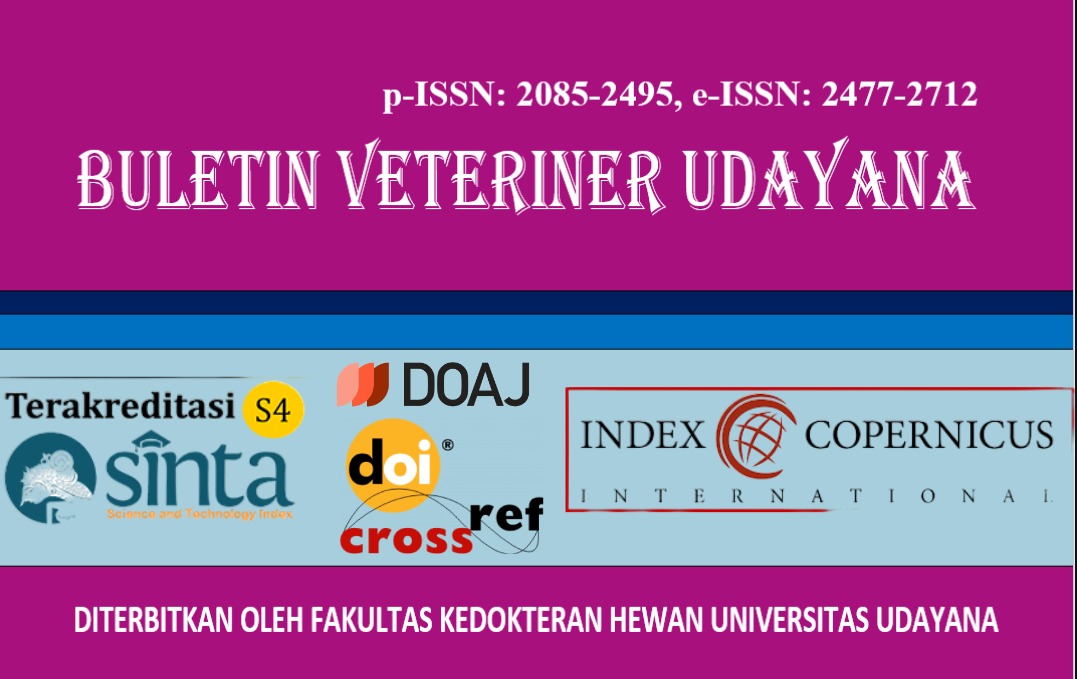SEROLOGICAL INVESTIGATION OF MYCOPLASMA GALLISEPTICUM IN BROILER FARMS OF TABANAN REGENCY USING ELISA
DOI:
https://doi.org/10.24843/bulvet.2025.v17.i03.p41Keywords:
serology, ELISA, Mycoplasma gallisepticum, Chronic Respiratory DiseseAbstract
Mycoplasma gallisepticum, the primary causative agent of Chronic Respiratory Disease (CRD), poses significant economic losses to the poultry industry through respiratory distress, decreased productivity, and elevated mortality in broilers. This study evaluated Mycoplasma gallisepticum antibody titters in broiler farms across Tabanan Regency, Bali, using the Enzyme-Linked Immunosorbent Assay (ELISA). Fifty serum samples were collected from five clinically healthy broiler farms (no observed respiratory signs) and analyzed with the IDEXX MG/MS Antibody Test ELISA kit. All unvaccinated broilers exhibited low detectable antibody titters, classified as non-reactive (<843). These results contrast with prior reports of high M. gallisepticum prevalence in Bali based on pathological findings. Potential explanations for this discrepancy include variations in chicken age, farm management, biosecurity protocols, sampling timing, and diagnostic methodologies. Our findings provide updated epidemiological data on Mycoplasma gallisepticum in Tabanan and highlight the necessity of regular serological surveillance to guide disease prevention strategies.




